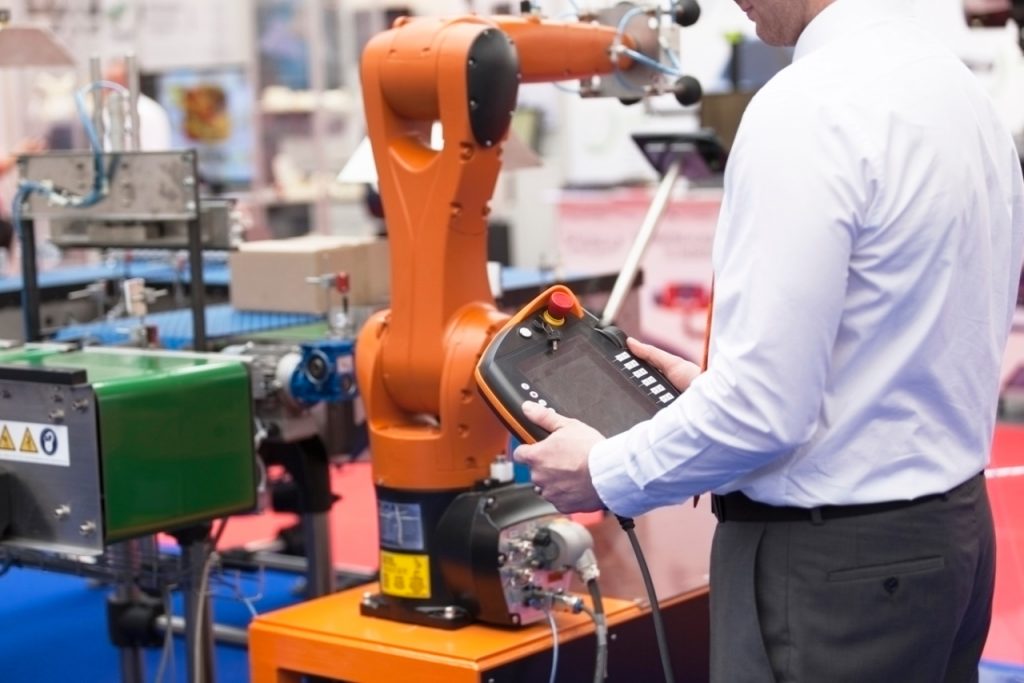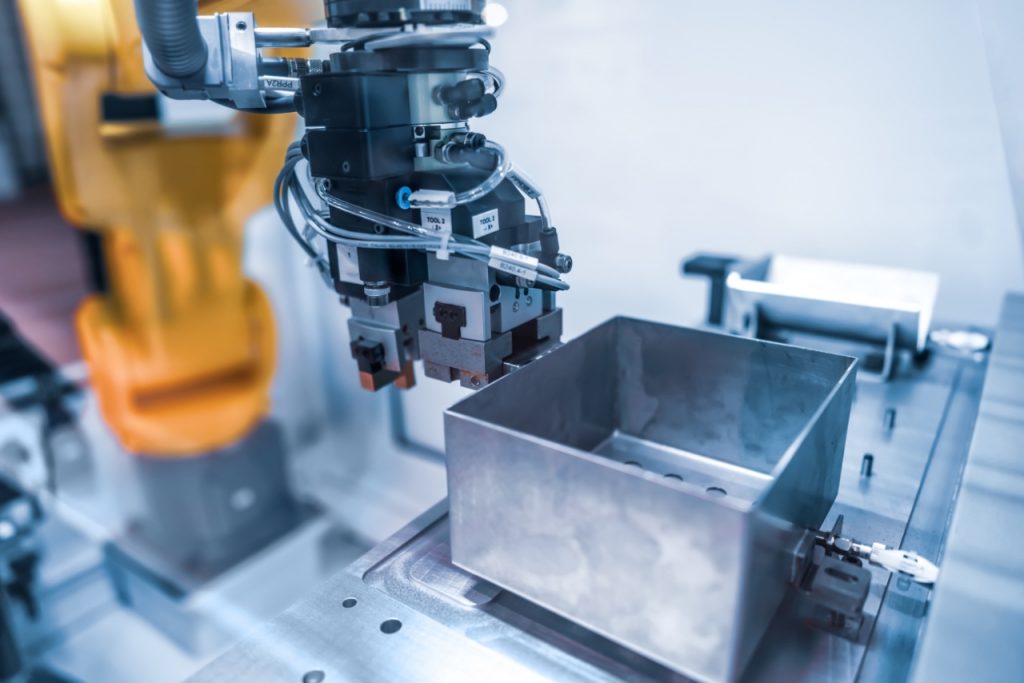What is Industry 4.0?
Industry 4.0 broadly means that factories could become lights out factories. These are factories that utilize robotic labor rather than human labor. Lights out factories, manned by robots, do not need any lights turned on as robots do not need light to see.
Features of Industry 4.0
Here are some other pertinent features of Industry 4.0
Robots interconnected via the internet
As already suggested, the main feature of Industry 4.0 is the presence of interconnected robots. These robots can connect and communicate with each other via the internet. It enables robots to learn quickly from each other, making production fast and flexible.
The use of artificial intelligence in the factory
Another feature of industry 4.0 is the use of artificial intelligence. With artificial intelligence, robots can learn independently and even develop new and better techniques whenever they make a mistake.
Reliance on computer-based algorithms
Commercial robots providers like universal-robots.com in the industry 4.0 rely mostly on computer algorithms for their production process. In this case, robots collaborate with each other in the production process with instructions issued by the algorithms. It results in the creation of smart networks in the production process.
Use of cloud technology
Another prominent feature of industry 4.0 is the use of cloud technology. With this technology, robots can access updates automatically. They can also get repaired by technicians without them being physically present. It also means that factories and robots themselves can save their work and information and also retrieve it quickly and correctly from the cloud. As many manufacturers around the world only now begin to adopt and accept industry 4.0, manufacturing technology is already moving to industry 5.0.
What is Industry 5.0?
Industry 5.0 is adding a human touch to industry 4.0. It means that industry 4.0 technology has an added component of the human touch. In this new dispensation, robots will work together with humans to make a better product and production process.
Features of Industry 5.0
The collaboration of man and robot
As robots have gained inherent safety features, they have made it possible for human workers to work alongside them. Factory workers now have robots as their colleagues and not machines that they use to carry out a particular process. Robot collaboration means that faster production and higher quality products are coming from the factory.
Making work lighter for human workers
With robots in play, some tasks that human workers carry out in the factory will have to be assigned to the robots. Robots carry out tasks that are difficult, boring, and dangerous to human workers within the factory. With those tasks taken away from human workers, they will then find themselves carrying out tasks that are relatively lighter than those they were previously carrying out.
Lesser impact on the environment
Manufacturers all over the world have been seen to be the major contributors of pollution to the environment. As more and more manufacturers adopt the use of robots, they are also adopting the use of renewable energy. It helps manufacturers to reduce their impact on the environment
What industry 5.0 is not?
For many, the idea of robots in the factory was looked at with trepidation. Many thought that it would bring job losses and redundancies for human workers. However, those companies that have already tested and implemented robot-human collaboration have seen that robots help their human workers gain better jobs and skills and lead to more people being hired for better roles and jobs.
Conclusion
Industry 4.0 has paved the way for industry 5.0, all thanks to the development of commercial robots. As more and more manufacturers adopt this new philosophy, we will see better quality goods and better manufacturing processes.

